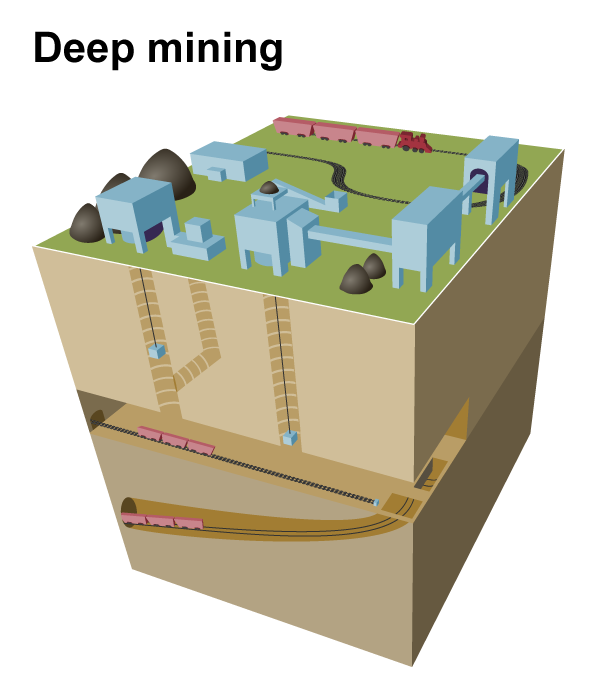Mining coal
Coal miners use large machines to remove coal from the earth. Many U.S. coal deposits, called coal beds or seams, are near the earth's surface, but others are deep underground. Modern mining methods allow U.S. coal miners to easily reach most of the nation's coal reserves and to produce about three times more coal in one hour than in 1978.
Coal miners use two primary methods to remove coal
Surface mining is often used when coal is less than 200 feet underground. In surface mining, large machines remove the topsoil and layers of rock known as overburden to expose coal seams. Mountaintop removal is a form of surface mining where the tops of mountains are removed to access coal seams. After the coal is removed, the disturbed area may be covered with topsoil for planting grass and trees. About two-thirds of U.S. coal production is from surface mines because surface mining is less expensive than underground mining.
Underground mining, sometimes called deep mining, is used when the coal is more than 200 feet below the surface. Some underground mines are thousands of feet deep, with tunnels that may extend out from the vertical mine shafts for miles. Miners ride elevators down deep mine shafts and travel on small trains in long tunnels to get to the coal. The miners use large machines to dig out coal.
Processing coal
After removing the coal from the ground, miners may send it to a preparation plant near the mining site. The plant cleans and processes coal to remove rocks, dirt, ash, sulfur, and other unwanted materials. This process increases the heating value of the coal.
Transporting coal
Coal can be transported from mines and processing plants to consumers in several different ways:
- Conveyors, trams, and trucks move coal around mines, for short distances from mines to that are consumers close to the mines, or to other modes of long-distance transportation.
- Trains transport nearly 70% of coal deliveries in the United States for at least part of the way from mines to consumers.
- Barges transport coal on rivers and lakes.
- Ships transport coal on the Great Lakes and the oceans to consumers in the United States and other countries.
- Slurry pipelines move mixtures of crushed coal and water. This method is not currently used in the United States.
Transporting coal can be more expensive than the cost of mining coal. Some coal consumers, such as coal-fired electric power plants, are near coal mines to lower transportation costs.
Last reviewed: February 16, 2023



